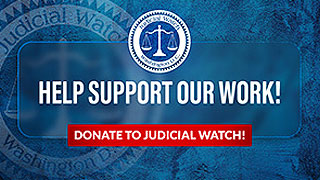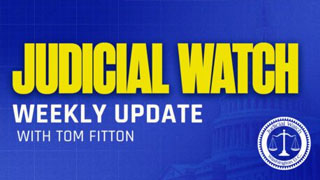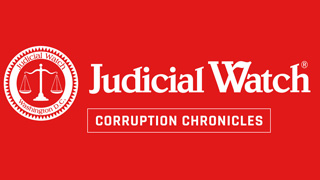
Whitewater Documents: The Criminal Case Against Hillary Clinton
The Castle Grande transactions were crimes’
Hillary Clinton ‘destroyed’ her personal records
A case of ‘possible obstruction’ of justice
Sources say redacted portions of memoranda contain a draft indictment of Mrs. Clinton
Never-before-published prosecution memos from April 1998 say Clinton’s ‘sworn statements to the RTC, the FDIC, the Senate and the House of Representatives and to OIC … reflected and embodied materially inaccurate stories’
A 4/10/98 OIC memo uses terms ‘crime(s),’ ‘criminal,’ ‘fraudulent,’ ‘misrepresented,’ ‘inaccurate,’ ‘deceive,’ ‘mislead,’ ‘misstatement,’ and ‘concealed’ 27 times in 20 pages to describe actions by Clinton and Whitewater associates
(Washington, DC) January 28, 2016 – Judicial Watch today released 246 pages of previously undisclosed Office of Independent Counsel (OIC) internal memos revealing extensive details about the investigation of Hillary Rodham Clinton for possible criminal charges involving her activities in the Whitewater/Castle Grande fraudulent land transaction scandal. The memos are “statements of the case” against Hillary Clinton and Webster Lee “Webb” Hubbell, Hillary Clinton’s former law partner and former Associate Attorney General in the Clinton Justice Department. Ultimately, the memos show that prosecutors declined to prosecute Clinton because of the difficulty of persuading a jury to convict a public figure as widely known as Clinton. (Links to the full set of documents are below.)
Although some details of the documents have been previously reported, Judicial Watch is today publicly releasing the independent counsel prosecution memos for the first time. The prosecution memos—portions of which were heavily redacted—were obtained by Judicial Watch from the National Archives and Records Administration (NARA) through a Freedom of Information Act (FOIA) request.
An April 10, 1998, memo summarizes “the crimes under consideration”
What, then are the crimes under consideration? Between January 1994 and February 1996 both Hillary Clinton and [Webster] Hubbell made numerous sworn statements to the RTC, the FDIC, the Senate and the House of Representatives, and to the OIC. Each of these reflected and embodied materially inaccurate stories relating to: how RLF [Clinton and Hubbell’s Rose Law Firm] came to be retained by MGSL [the Madison Guaranty Savings & Loan]; Hillary Clinton’s role in the IDC/Castle Grande venture; Hillary Clinton’s role in representing MGSL; Hillary Clinton’s role in representing MGSL before state agencies’; Hubbell’s representations to the RTC [Resolution Trust Corporation] and FDIC regarding Hillary Clinton’s role in the IDC/Castle Grande venture; and the removal of records from the RLF. The question, generally, is not whether the statements are inaccurate, but whether they are willfully so.
The records released today by Judicial Watch were prepared for an “All OIC Attorneys” meeting on April 27, 1998, at which a final decision about whether to indict Clinton and Hubbell was the subject of a lengthy debate. The records explore in detail the role Clinton played in the fraudulent Castle Grande transaction, the role of Madison Guaranty Savings & Loan, and the subsequent lengthy cover-up as the Clintons sought and won the White House.
Clinton, according to prosecutors, drafted an option agreement that concealed from federal bank examiners a fraudulent $300,000 cross-loan in the Castle Grande transaction. Her concealment of her role in this fraudulent transaction, including the hiding of her Rose Law Firm billing records concerning her legal work for Madison, were the subject of an OIC obstruction of justice probe.
The 1998 memoranda include substantial evidence depicting Clinton and her former Rose Law Firm partners—Hubbell, and Vincent Foster, both of whom went on to senior positions in the Bill Clinton presidency—as complicit in activities that “facilitated crimes.”
Page 18 of the OIC documents notes that Clinton “destroyed” her personal records of her work for Madison Guaranty. Page 39 of the documents notes:
Section II contains a chronological background and contextual summary of the investigation so that the facts relating to possible obstruction can be placed in the context of the ongoing investigation by OIC.
The evidence in the new documents covers:
- Castle Grande. “The Castle Grande transactions were crimes.” The statement is followed by an explicit six-paragraph dissection of the land-flipping scheme.
- Madison Guaranty S&L. Clinton minimized the role she played in seeking state regulatory assistance for the corrupt savings and loan, headed by key Clinton financial and political supporter James McDougal. At the time, Bill Clinton was governor of Arkansas.
- Vincent Foster and the Missing Rose Law Firm Billing Records. The Rose records were a key piece of evidence in the probe. They were missing for years. After Foster’s July 1993 suicide, the OIC documents note, where the billing records went “is an open question…. Several pieces of evidence support the inference that personal documents which Hillary Clinton did not want disclosed were located in Foster’s office at the time of his death and then removed.”
- Removal of Records from Vincent Foster’s Office. “ [O]n the afternoon of July 21st Bernard Nussbaum, then White House Counsel, initially agreed to allow two career DOJ employees to review the documents in Foster’s office for evidence that might shed light on the cause of his death. That evening and the next morning Nussbaum, Hillary Clinton, Susan Thomases, and Maggie Williams (Hillary Clinton’s chief of staff) exchanged 10 separate phones calls … That morning, according to the DOJ employees, Nussbaum changed his mind and refused to allow the DOJ prosecutors to review the documents; instead, he reviewed them himself and segregated several as ‘personal’ to the Clintons.”
- Hiding the Billing Records. “On the evening of July 22nd, Thomas Castleton … assisted Williams [Maggie Williams, Hillary Clinton chief of staff] in carrying a box of personal documents up to … a closet in Hillary Clinton’s office. The closet is approximately 30 feet from the table in the Book Room, where the billing records were found 2 years later…. There is a circumstantial case that the records were left on the table by Hillary Clinton. She is the only individual in the White House who had a significant interest in them and she is one of only 3 people known to have had them in her possession since their creation in February 1992.”
- Buying the Silence of a Co-Conspirator? Hubbell, criticized by the OIC for his lack of cooperation with the probe, received several “jobs” from Clinton supporters for which he apparently did little or no work. During a taped conversation in prison, Hubbell appears to acknowledge that he withheld information from the OIC. Several of Hubbell’s job-providers fell most strongly within the hush money allegation. The OIC notes eight of them on page 197.
- The Missing Draft Indictment. More than 60 pages of the OIC memoranda are completely censored, withheld by the National Archives. Multiple sources tell Judicial Watch that these pages include a full draft indictment of Clinton and Hubbell, as well as a detailed “order of Evidence” list.
The National Archives is withholding additional documents Judicial Watch believes to be critical to understanding Clinton’s full role in the Whitewater scandal.
On March 9, 2015, Judicial Watch submitted a FOIA request seeking all draft indictments of Clinton in the files of Hickman Ewing Jr., who served as deputy independent counsel in the Whitewater probe. In 1999, Ewing testified that he wrote a draft indictment of Clinton.
On March 19, 2015, the National Archives admitted locating records responsive to the Ewing material request, confirming that it found 38 pages of responsive records in a folder entitled “Draft Indictment,” and approximately 200 pages of responsive records in a folder entitled “Hilary Rodham Clinton/Webster L. Hubbell Draft Indictment.” Judicial Watch is suing in federal court to force the release of the draft indictment, which is being withheld by the National Archives to protect the privacy of Hillary Clinton.
Ultimately, as an April 24, 1998, memo suggests, prosecutors were persuaded that a jury would not convict Clinton based upon circumstantial evidence. OIC attorney Paul Rosenzweig wrote:
In a high profile case of this sort, however, I think that some jurors are likely to put OIC to the full measure of proof beyond a reasonable doubt and, in effect, insist that circumstantial evidence is an inferior form of evidence on which they cannot convict. Such a distinction would be “lawless” in a formal sense, as contrary to their jury instructions – but we blink reality if we do not expect this reaction to a primarily circumstantial high profile case.
The prosecutor concluded:
Bottom line: We can anticipate the following: 2% = Rule 29; 18% = Acquittal; 70% =Hung Jury; 10% = Conviction. Not enough in my view.
“These new Hillary Clinton prosecution memos are damning and dramatic,” said Judicial Watch President Tom Fitton. “Hillary Clinton’s bank fraud, obstruction, lies, and other fraud began in Arkansas, continued in the White House and actually accelerated because the suicide of her friend Vincent Foster. The memos suggest that if she weren’t First Lady, she would have been successfully prosecuted in federal court. As we continue the court fight to get the actual draft indictment of Hillary Clinton we first uncovered in this investigation, Americans would do well to read these memos. If you want to understand the deplorable ethics and corruption at the Clinton State Department, these documents provide important background.”
Links to the complete set of documents are available here:
Part one of “HRC Meeting” NARA Whitewater OIC document
Part two of “HRC Meeting” NARA Whitewater OIC document
Part three of “HRC Meeting” NARA Whitewater OIC document
Part four of “HRC Meeting” NARA Whitewater OIC document
















